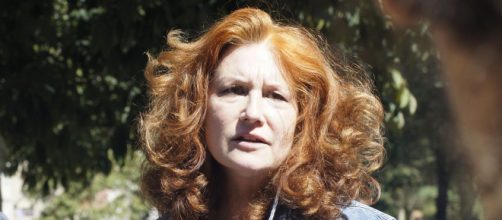You don't expect a 25-year-old art story to interface with a current story about abortion
But there's a clear thorough line. Kate Cox recently won her lawsuit against Texas to end her pregnancy and in 1998 artist Karen Finley won her lawsuit against the National Endowment for the Arts. And both victories were quashed by Republican politicians.
While a lower court granted permission to Cox and her doctor, the state Supreme Court, packed with Republicans, took back the permission. As well, while Finley's work passed a peer review that earned her a fellowship, the NEA chair – a lawyer appointed by George HW – ruled against the fellowship.
You call this limited government?
The Cox and Finley cases are not only unbound, but the former was also a critical situation. Yet, when it comes to political interference, the difference between the two is distinction is without a difference.
Such an unimagined link between these two stories surfaced when Finley made the news in the same week as Cox with a show at Art Basel in Miami Beach. Her di lei featured art di lei by her was a work made while performing the NEA. At the time, the artist said she saw herself as a stand-in for artists being dismissed.
I'm not a Finley fan. As I see her, she goes begging to be dismissed. For the NEA fellowship, she smeared her bare body with chocolate frosting, red candles, and alfalfa sprouts, saying it was a statement about the treatment of women in American society.
I didn't get the connection between sprout and sexism then and I still don't.
Finley seems prone to exhibitionism. She posed for Playboy, saying she needed the money-as if that were her her her only option. Now the bared body makes the scene again at Art Basel where she asks visitors to join her in a life drawing class sketching from an unclad female model.
Great expectations
What accounts for this concern with bared female bodies? She says it's to recast them as neutral teaching tool in the art of drawing. That works in a formal art class, but can a general population focus on the nuance faced with an undraped figure?
Far from pioneering, Finley's fixation on the exposed female seems old timey.
It's as if she were saying that picturing women without clothes hadn't existed ad nauseam through the ages, and she was developing a new concept.
And she's still in that mindset. Finley told the New York Times, “I think a lot about the fact that I've had the privilege of censorship – that my body would be considered worthy of censorship. There are many people whose voices are not even listened to in the first place.” Does that sound as if she were rubbing her hands together in some kind of glee?
None of this excuse GOP pols big on small government except when it comes to women's rights, voting rights, books we can read and words we can say.
One more thing. When Finley passed the peer review for her NEA fellowship, the chair should have let the process play out. That way, art critics like me could pooh-pooh her work instead of him.


